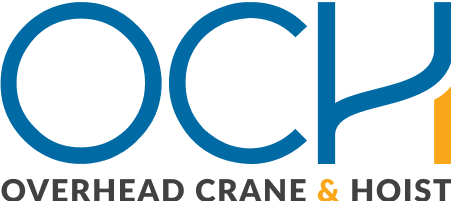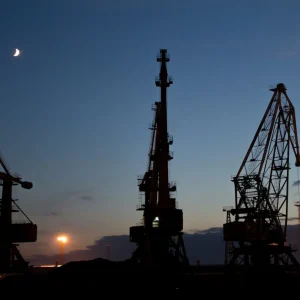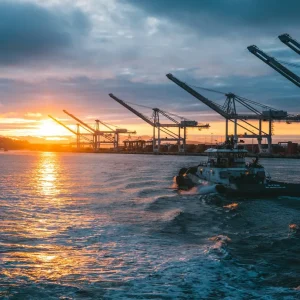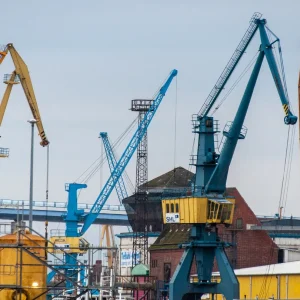
Interstate armed conflicts, while primarily seen as geopolitical and humanitarian crises, also have substantial economic repercussions. These conflicts affect various sectors, including the crane builders, hoist, and industrial lifting equipment industry. This article examines how such conflicts impact this industry in North America, focusing on supply chain disruptions, market volatility, and long-term strategic adjustments.
Supply Chain Disruptions
Raw Material Shortages
The crane and hoist industry relies heavily on raw materials such as steel, aluminium, and copper. Interstate armed conflicts often lead to disruptions in the supply of these materials. For instance, the 2022 conflict between Russia and Ukraine severely affected the global steel supply, as both countries are major steel exporters. North American crane and hoist manufacturers faced significant challenges in sourcing raw materials, leading to increased costs and production delays.
Logistical Challenges
Armed conflicts can disrupt transportation routes, affecting the delivery of raw materials and finished products. Ports and shipping lanes may be closed or deemed unsafe, leading to rerouting and delays. For example, the ongoing conflict in the Middle East has led to the closure of several key shipping routes, causing delays and increased shipping costs for North American manufacturers. These logistical challenges result in increased lead times and higher operational costs for companies in the crane and hoist industry.
Market Volatility
Fluctuating Demand
Interstate armed conflicts can lead to significant fluctuations in demand for cranes and hoists. On one hand, there may be increased demand for reconstruction efforts in conflict-affected areas. On the other hand, economic uncertainty can lead to reduced investment in infrastructure and industrial projects. For example, during the Iraq War, there was a surge in demand for construction equipment in the region, but global economic instability led to decreased investments elsewhere, impacting manufacturers in North America.
Price Instability
The crane and hoist industry is also affected by price instability due to armed conflicts. The volatility of raw material prices, coupled with increased production and shipping costs, can lead to unpredictable pricing for end products. This makes it challenging for manufacturers to maintain stable profit margins. The industry saw significant price fluctuations during the 2011 Libyan Civil War, as oil prices soared and impacted the cost of production and transportation for North American companies.
Strategic Adjustments
Diversification of Supply Chains
To mitigate the risks associated with supply chain disruptions, many North American crane and hoist manufacturers are diversifying their supply chains. This includes sourcing raw materials from multiple suppliers and regions to reduce dependency on conflict-prone areas. For example, companies have been exploring alternative suppliers in South America and Southeast Asia to ensure a steady supply of raw materials.
Investment in Technology
Technological advancements can help companies in the crane and hoist industry adapt to the challenges posed by interstate armed conflicts. Investments in automation and digitalisation can enhance production efficiency and reduce dependency on labour, which may be affected by geopolitical instability. Additionally, advanced tracking and monitoring systems can improve supply chain visibility and resilience. Companies like Konecranes have been investing in smart technologies to enhance operational efficiency and mitigate risks associated with supply chain disruptions.
Geopolitical Risk Management
Enhanced Risk Assessment
Companies are increasingly incorporating geopolitical risk assessments into their strategic planning. This involves analysing the potential impact of interstate armed conflicts on their operations and developing contingency plans. Enhanced risk assessment helps companies identify vulnerabilities and implement measures to mitigate risks. For instance, Terex Corporation has integrated geopolitical risk management into its business strategy, allowing the company to respond swiftly to emerging threats and minimise operational disruptions.
Insurance and Financial Hedging
Insurance and financial hedging are critical tools for managing the financial risks associated with armed conflicts. Companies can purchase insurance policies that cover losses due to supply chain disruptions, property damage, and other conflict-related risks. Financial hedging strategies, such as forward contracts and options, can help stabilise prices and protect against currency fluctuations. By leveraging these financial instruments, companies can safeguard their assets and ensure business continuity.
Labour Market Impacts
Workforce Displacement
Interstate armed conflicts can lead to workforce displacement, affecting the availability of skilled labour in the crane and hoist industry. Conflict zones often experience mass migration, with workers fleeing to safer areas. This displacement can create labour shortages in affected regions and increase competition for skilled workers in North America. Companies may need to invest in training programmes to develop local talent and mitigate the impact of labour shortages.
Safety and Security Concerns
The safety and security of employees working in conflict-affected areas are major concerns for companies in the crane and hoist industry. Ensuring the well-being of workers and maintaining operational continuity requires robust safety protocols and contingency planning. For instance, during the Syrian Civil War, many multinational companies implemented stringent safety measures and evacuation plans to protect their employees and minimise operational disruptions.
Regulatory and Compliance Challenges
Export Controls and Sanctions
Interstate armed conflicts often lead to the imposition of export controls and economic sanctions, which can restrict the flow of goods and services. North American crane and hoist manufacturers must navigate complex regulatory landscapes to ensure compliance with these measures. For example, sanctions against Iran have affected the export of industrial equipment, requiring companies to carefully assess and adjust their international trade strategies.
Environmental and Social Governance (ESG) Considerations
In recent years, there has been a growing emphasis on environmental and social governance (ESG) considerations in the crane and hoist industry. Companies are increasingly held accountable for their environmental impact and social responsibilities. Interstate armed conflicts can complicate ESG compliance, as conflict zones often face environmental degradation and human rights violations. North American manufacturers must prioritise sustainable practices and ethical standards, even in challenging geopolitical contexts.
Future Outlook and Industry Resilience
Adaptation and Innovation
The crane and hoist industry in North America is demonstrating remarkable resilience in the face of interstate armed conflicts. Companies are adapting to the evolving geopolitical landscape by embracing innovation and implementing robust risk management strategies. The integration of advanced technologies, such as artificial intelligence and predictive analytics, is enhancing operational efficiency and enabling proactive decision-making. For example, automated systems can optimise supply chain management, reducing the impact of disruptions caused by armed conflicts.
Collaboration and Partnerships
Collaboration and partnerships are crucial for building industry resilience. North American crane and hoist manufacturers are increasingly collaborating with suppliers, customers, and industry associations to share knowledge, resources, and best practices. By fostering strong partnerships, companies can collectively address challenges and develop innovative solutions. Industry associations, such as the Crane Manufacturers Association of America (CMAA), play a vital role in facilitating collaboration and advocating for the industry’s interests.
Conclusion
Interstate armed conflicts present significant challenges for the crane builders, hoist, and industrial lifting equipment industry in North America. Supply chain disruptions, market volatility, and regulatory complexities necessitate strategic adjustments and robust risk management. By diversifying supply chains, investing in technology, and prioritising ESG considerations, companies can enhance their resilience and adapt to the evolving geopolitical landscape. The industry’s ability to innovate and collaborate will be key to navigating the uncertainties of interstate armed conflicts and ensuring long-term success.






